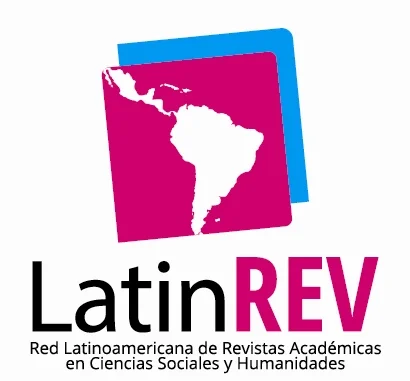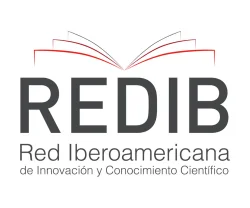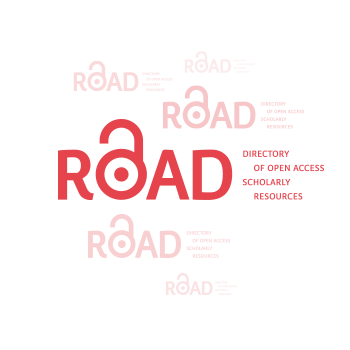The Influence of Spanish Phonology on English Intonation and Stress Patterns
Resumen
This study examines the influence of Spanish phonology on the acquisition of intonation and prosodic patterns in English by Spanish speakers. It highlights that structural differences in the prosodic systems of both languages significantly impact pronunciation, fluency, and the perception of naturalness in oral communication. In Spanish, a syllabic rhythm predominates, with a predictable placement of stress on certain syllables, contrasted with the accentual pattern of English, where variability in emphasis placement and modal intonations reflect pragmatic intentions and nuances. These differences cause native Spanish speakers to tend to apply Spanish-specific accent and intonation patterns, making comprehension difficult for English-speaking listeners and limiting expressive capacity in English discourse. The paper emphasizes the need to implement pedagogical strategies that promote the internalization of English prosodic patterns through specific training in tonal variations, stress placement, and contrasting intonational structures. This would facilitate more authentic and effective communication, helping Spanish speakers overcome phonological obstacles and improve their communicative competence in English.
Descargas
Citas
Gussenhoven, C. (2004). The Phonology of Tone and Intonation. Cambridge University Press.
Ladd, D. R. (2008). Intonational Phonology. Cambridge University Press.
Monzó, L. (2013). La entonación contrastiva entre el español y el inglés: implicaciones para la enseñanza de la pronunciación. Revista de Lingüística Aplicada, 51, 125-145. Roach, P. (2009). English Phonetics and Phonology. Cambridge University Press.
Tench, P. (1996). The Intonation Systems of English and Spanish. Cengage Learning.
Gussenhoven, C. (2004). The Phonology of Tone and Intonation. Cambridge University Press.
Ladd, D. R. (2008). Intonational Phonology. Cambridge University Press.
Monzó, L. (2013). La entonación contrastiva entre el español y el inglés: implicaciones para la enseñanza de la pronunciación. Revista de Lingüística Aplicada, 51, 125-145.
Roach, P. (2009). English Phonetics and Phonology. Cambridge University Press.
Tench, P. (1996). The Intonation Systems of English and Spanish. Cengage Learning.
Gussenhoven, C. (2004). The Phonology of Tone and Intonation. Cambridge University Press.
Ladd, D. R. (2008). Intonational Phonology. Cambridge University Press.
Chen Shih , J. (2025). Relación entre inteligencia emocional y rendimiento académico en estudiantes de nivel superior de Arequipa en la postpandemia . Ciencia Y Reflexión, 4(2), 648–667. https://doi.org/10.70747/cr.v4i2.299
Alcántara , R. L. (2025). Acompañamiento Pedagógico Estrategia Colaborativa. Ciencia Latina Revista Científica Multidisciplinar, 9(3), 7881-7886. https://doi.org/10.37811/cl_rcm.v9i3.18412
Agila Mocha, R. J., Vivanco Ureña, C. I., León Bravo, F. E., & Reyes Carrión , J. P. (2025). Software Educativos para el Proceso de Enseñanza Aprendizaje de Matemáticas en Bachillerato. Ciencia Y Reflexión, 4(2), 1341–1369. https://doi.org/10.70747/cr.v4i2.334
Chen Shih , J. (2025). Relación entre inteligencia emocional y rendimiento académico en estudiantes de nivel superior de Arequipa en la postpandemia . Ciencia Y Reflexión, 4(2), 648–667. https://doi.org/10.70747/cr.v4i2.299
Quelal Morejón , C. E., Rogel Calderón , A. S., Loaiza Dávila , L. E., & Maqueira Caraballo, G. D. L. C. (2025). Los juegos predeportivos: una alternativa para la inclusión de estudiantes con Trastorno del Espectro Autista (TEA) a la clase de Educación Física. Arandu UTIC, 12(2), 2169–2189. https://doi.org/10.69639/arandu.v12i2.1055
Guadalupe Beltrán , E. S., Palomeque Zambrano, J. Y., & Loor Avila, B. A. (2025). Desafíos de la Educación Superior en Contextos Híbridos: Análisis de las Prácticas Docentes en la Universidad Estatal de Milagro durante el Periodo Académico 2025. Revista Veritas De Difusão Científica, 6(2), 1259–1281. https://doi.org/10.61616/rvdc.v6i2.685
Lozano Flores, L. D. (2025). Gamificación en el aprendizaje de unidades de tiempo: el caso de Sims 4. Emergentes - Revista Científica, 5(2), 68–86. https://doi.org/10.60112/erc.v5.i1.373
Velásquez Torres, A. O., González Bautista, G., Neira Vera , M., & García Montañez , A. M. (2025). Formación Docente en la Resolución Pacífica de Conflictos: Diagnóstico de una Necesidad Curricular en Colombia. Estudios Y Perspectivas Revista Científica Y Académica , 5(2), 2936–2952. https://doi.org/10.61384/r.c.a.v5i2.1329
Duarte Gahona, Y. K. (2025). Aplicación de la Inteligencia Artificial en la Personalización del Aprendizaje para Estudiantes con Necesidades Educativas Especiales . Revista Científica De Salud Y Desarrollo Humano , 6(2), 33–53. https://doi.org/10.61368/r.s.d.h.v6i2.575
Monzó, L. (2013). La entonación contrastiva entre el español y el inglés: implicaciones para la enseñanza de la pronunciación. Revista de Lingüística Aplicada, 51, 125-145.
Tench, P. (1996). The Intonation Systems of English and Spanish. Cengage Learning.
Roach, P. (2009). English Phonetics and Phonology. Cambridge University Press.
Archibald, J. (1998). Second language phonology. John Benjamins. https://doi.org/10.1075/lald.18
Cruttenden, A. (2014). Gimson’s pronunciation of English (8th ed.). Routledge.
Flege, J. E., & Bohn, O. S. (2021). The revised speech learning model (SLM-r). In R. Wayland (Ed.), Second language speech learning: Theoretical and empirical progress (pp. 3–83). Cambridge University Press. https://doi.org/10.1017/9781108886901.002
Hualde, J. I. (2014). Los sonidos del español (2.ª ed.). Cambridge University Press.
Cutler, A. (2012). Native listening: Language experience and the recognition of spoken words. MIT Press.
Flege, J. E., & Bohn, O. S. (2021). The revised speech learning model (SLM-r). In R. Wayland (Ed.), Second language speech learning: Theoretical and empirical progress (pp. 3–83). Cambridge University Press. https://doi.org/10.1017/9781108886901.002
Ramus, F., Nespor, M., & Mehler, J. (1999). Correlates of linguistic rhythm in the speech signal. Cognition, 73(3), 265–292. https://doi.org/10.1016/S0010-0277(99)00058-X
Roach, P. (2009). English phonetics and phonology: A practical course (4th ed.). Cambridge University Press.
Derechos de autor 2025 Carlos David Palate Colcha , Michelle Verónica Proaño Melo, Dylan Vinicio Berrones Cevallos, Diana Elizabeth Ocaña Ramos, Cristina Alexandra Morejón Paredes

Esta obra está bajo licencia internacional Creative Commons Reconocimiento 4.0.













.png)




















.png)
1.png)


